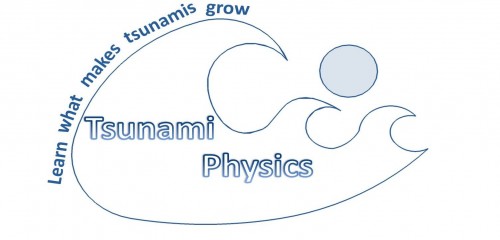
Resources
Teaching Resources:
Video camera
You will have to try out the school's video camera before making this option available to students. You can always eliminate making a movie as an option and have them all do Flowgrams if video equipment is not available. All recording devices are a bit different, but Media College has a good camera tutorial for beginners.
Flowgram
First check to make sure your school computers can access the Flowgram website and that no firewalls are set-up. The Flowgram website provides an example that details what their technology can do ("See a Flowgram in Action") and a tutorial.
Posting on YouTube
1. Sign up for a YouTube account. All of the students will need to sign up for YouTube accounts as well in order to view the private videos from home.
2. Upload videos making sure you make them private
3. Create a playlist of the whole class's videos
Handouts:
Movie Script Outline/Information Sheet
Flowgram Script Outline/Information Sheet
Internet sites organized by student role:
Waves Review
Glenbrook Physics Classroom Waves Tutorial: <https://www.glenbrook.k12.il.us/GBSSCI/PHYS/CLASS/waves/u10l4a.html>
Physics Classroom Waves Overview: <https://www.physicsclassroom.com/class/waves/U10L1c.cfm>
NOVA tour of the electromagnetic spectrum: <https://www.pbs.org/wgbh/nova/gamma/spectrum.html>
NASA on visible light: <https://science.hq.nasa.gov/kids/imagers/ems/visible.html>
NASA on the electromagnetic spectrum: <https://imagine.gsfc.nasa.gov/docs/science/know_l1/emspectrum.html>
Transverse/Longitudinal wave applet: <https://imagine.gsfc.nasa.gov/docs/science/know_l1/emspectrum.html>
Transverse/Longitudinal wave animation: <https://www.kettering.edu/~drussell/Demos/waves/wavemotion.html>
Travelling wave applet: <https://www.ngsir.netfirms.com/englishhtm/TwaveA.htm>
Engineer
The Anatomy of a Tsunami flash interactive: <https://www.pbs.org/wgbh/nova/tsunami/anat-flash.html>
Canadian Geographic's information on Tsunamis: <https://www.canadiangeographic.ca/tsunami/tsunamis101.asp>
CNN interactive flash on tsunamis: <https://www.haileybury.herts.sch.uk/geography/images/Flash%20Animations/Tsunami%20Waves%20of%20Destruction.swf>
University of Washington on the physics of tsunamis: <https://www.geophys.washington.edu/tsunami/general/physics/physics.html>
NOAA on the physics of tsunamis: <https://wcatwc.arh.noaa.gov/about/physics.htm>
American Journal of Applied Science article on the physics behind the 2004 Indian Ocean tsunami: <https://www.scipub.org/fulltext/ajas/ajas281188-1193.pdf>
Nature article the physics of tsunamis: <https://www.nature.com/nature/journal/v433/n7024/full/433350a.html>
Institute of Geophysics and Planetary Physics article on landslides causing tsunamis: <https://www.es.ucsc.edu/~ward/papers/single.pdf>
Physicist
The Anatomy of a Tsunami flash interactive: <https://www.pbs.org/wgbh/nova/tsunami/anat-flash.html>
NOAA's Tsunami Website: <https://www.tsunami.noaa.gov/>
International Tsunami Information Center: <https://ioc3.unesco.org/itic/>
United Nations article on tsunami early warning systems: <https://www.un.org/apps/news/story.asp?NewsID=13999&Cr=tsunami&Cr1>
Science Daily article on a new approach for early warning systems: <https://www.sciencedaily.com/releases/2008/11/081110153720.htm>
Indian Ocean early warning system flash interactive: <https://www.guardian.co.uk/flash/asia_tsunami_warning.swf>
German Indonesian Early Warning System website: <https://www.gitews.org/index.php?id=22&L=1>
Science Daily article on improving early warning systems: <https://www.sciencedaily.com/releases/2008/01/080123182522.htm>
Peter Tyson article on developing a worldwide early warning system: <https://www.pbs.org/wgbh/nova/tsunami/wave.html>
Reporter
The Anatomy of a Tsunami flash interactive: <https://www.pbs.org/wgbh/nova/tsunami/anat-flash.html>
US Geological Survey accounts on surviving tsunamis: <https://pubs.usgs.gov/circ/c1187/>
Tsunamis Society monthly journal: <https://tsunamisociety.org/>
Pacific Tsunami Museum website: <https://www.tsunami.org/>
University of Southern California Tsunami Research Center footage: <https://cwis.usc.edu/dept/tsunamis/2005/video/video.html>
Historian
The Anatomy of a Tsunami flash interactive: <https://www.pbs.org/wgbh/nova/tsunami/anat-flash.html>
NOVA interactive flash "Wave that shook the world:" <https://www.pbs.org/wgbh/nova/tsunami/once-flash.html>
National Geographic website "Tsunami: Killer Wave:" <https://environment.nationalgeographic.com/environment/natural-disasters/tsunami-profile.html?fs=video.nationalgeographic.com>
The Cutting Edge tsunami visualizations: <https://serc.carleton.edu/NAGTWorkshops/visualization/collections/tsunami.html>
NASA satellite imagery of 2004 Indian Ocean tsunami: <https://www.nasa.gov/vision/earth/lookingatearth/indonesia_quake.html>
NASA Landsat 7 images of 2004 Indian Ocean tsunami: <https://www.nasa.gov/vision/earth/lookingatearth/Landsat_Tsunami.html>
Further Resources:
A fairly technical discussion about how to help students gain a better understanding than they were intended to in this WebQuest about how tsunamis form. This article could be integrated into class discussion after completing the WebQuest with a more advanced group of students, or a student who had great interest.
Margaritondo, G. "Explaining the Physics of Tsunamis to Undergraduate and non-Physics Students." Eur. J. Phys. 26 401-407